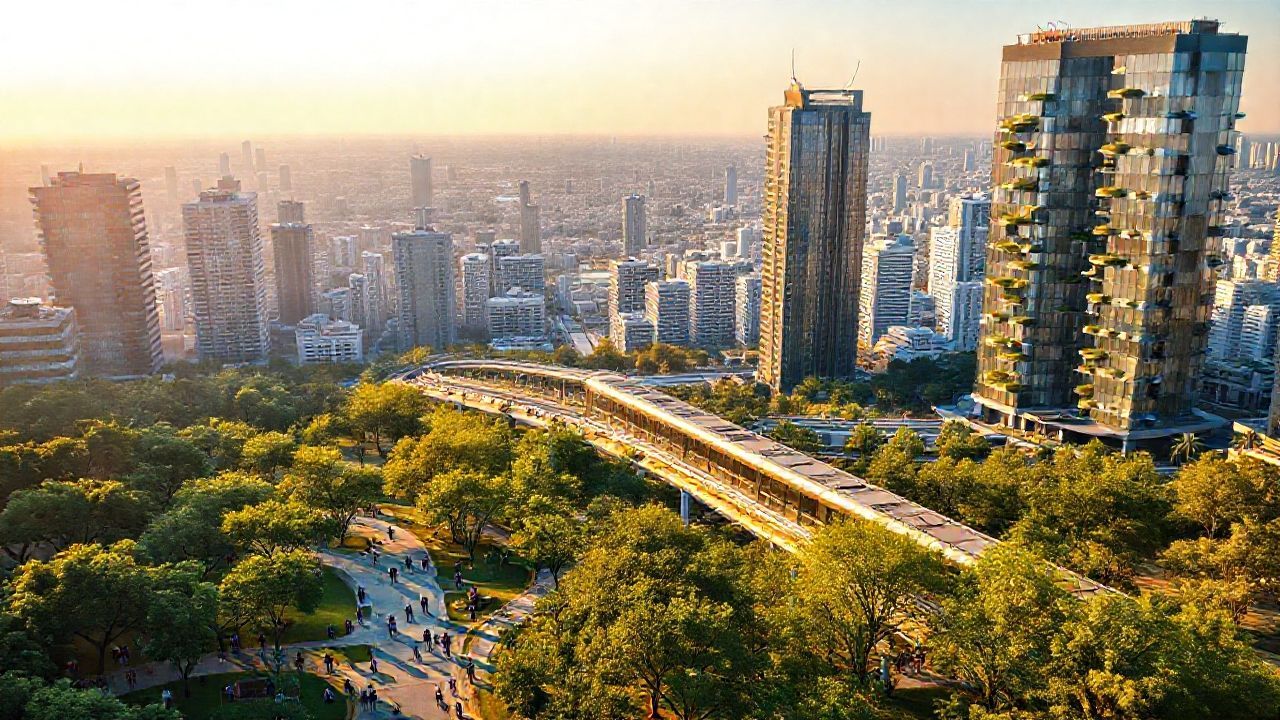Urbanization Unveiled: Navigating the Future of Our Cities
The relentless march of global demographics points to one undeniable truth: our future is undeniably urban. Everywhere you look, from burgeoning megacities in Asia to revitalized downtowns in Europe, the process of urbanization is reshaping landscapes, economies, and societies. It’s a phenomenon of unparalleled scale, presenting both immense opportunities and formidable challenges. In my 12 years covering this beat, I’ve found that the narrative around urbanization is far more nuanced than headlines often suggest, encompassing everything from infrastructure strain to cultural transformation.
Key Summary:
- Global urbanization is accelerating, with profound impacts on human societies and the environment.
- It presents a duality of challenges (e.g., resource strain, inequality) and opportunities (e.g., economic growth, innovation).
- Sustainable urban planning, smart city technologies, and community engagement are crucial for future success.
- Misconceptions often oversimplify the complexities of urban development.
- Understanding urbanization is key to shaping a resilient and equitable future.
Why This Story Matters
Understanding urbanization is not just an academic exercise; it’s about grasping the fundamental forces shaping our world. Over half of the global population now lives in urban areas, a figure projected to rise to nearly 70% by 2050. This shift impacts everything from global climate patterns to local housing markets, from food supply chains to social justice. Reporting from the heart of the community, I’ve seen firsthand how infrastructure, once adequate, buckles under the weight of rapid population growth, leading to critical discussions around resource allocation and equitable development. The decisions made today about urban planning will resonate for generations, determining the liveability, sustainability, and prosperity of our planet’s future.
Main Developments & Context
The current wave of urbanization is distinct from historical precedents. While cities have always been centers of commerce and culture, the pace and scale of contemporary urban growth are unprecedented, particularly in the developing world. This has led to the rise of megacities – urban agglomerations with populations exceeding 10 million – and rapidly expanding secondary cities that often lack the robust planning frameworks of their older counterparts.
The Megacity Phenomenon
Cities like Tokyo, Delhi, Shanghai, and Mexico City are not just large; they are complex ecosystems that demand innovative solutions for housing, transportation, and public services. Their sheer size creates unique challenges, but also unparalleled economic engines and hubs of innovation.
Infrastructure Under Pressure
The rapid influx of people into urban centers places immense pressure on existing infrastructure. Water supply, sanitation, energy grids, and public transport systems are often stretched to their limits. This necessitates massive investments and smart planning to avoid widespread breakdowns and ensure basic quality of life. Consider the challenge of providing clean water to a city of 20 million people – it’s a logistical and environmental tightrope walk.
Environmental Footprint of Urban Growth
Cities are significant contributors to greenhouse gas emissions and resource consumption. However, they also offer opportunities for concentrated, efficient resource use and the adoption of green technologies. The push for sustainable urban development is a direct response to mitigating this environmental impact, turning cities into laboratories for ecological innovation.
Expert Analysis / Insider Perspectives
Engaging with urban planners and community leaders reveals the intricate dance between policy and lived experience. Dr. Anya Sharma, a leading urban sociologist, notes,
“The greatest challenge in contemporary urbanization isn’t just building new structures, but building resilient communities that can adapt to change and foster social cohesion. It requires moving beyond top-down planning to genuinely listen to the voices of residents.”
This perspective underscores the importance of participatory urban design, where citizens are active co-creators of their urban environment, not just passive recipients. In my 12 years covering this beat, I’ve found that true innovation often comes from local leaders collaborating with tech innovators to pilot solutions that directly address community needs, whether it’s through improved public transport or localized renewable energy projects.
Common Misconceptions
Despite the extensive discussion around urbanization, several common misconceptions persist:
- Misconception: Urbanization is solely a Western phenomenon.
Reality: The fastest rates of urban growth are currently in Africa and Asia, driving a shift in global urban demographics and presenting unique developmental challenges.
- Misconception: All cities are the same.
Reality: Cities vary dramatically in their planning, infrastructure, culture, and socio-economic dynamics. Solutions that work in one urban context may be entirely inappropriate in another.
- Misconception: Urbanization always leads to environmental degradation.
Reality: While cities have significant environmental footprints, well-planned, dense urban environments can actually be more resource-efficient per capita than sprawling rural or suburban developments, especially with integrated green infrastructure and public transport.
Navigating the Future of Urbanization
The future of urbanization is not predetermined; it is being shaped by policy choices, technological advancements, and community actions today. Sustainable urban planning is at the forefront of this effort, advocating for compact, mixed-use developments, robust public transportation, and the preservation of green spaces. The concept of “smart cities” – utilizing data and technology to improve efficiency and quality of life – offers another promising avenue, though it must be implemented equitably to avoid creating new divides. Ultimately, successful urbanization hinges on our ability to create cities that are not just economically vibrant, but also environmentally sustainable and socially inclusive, fostering a high quality of life for all their inhabitants.
The journey towards truly resilient and equitable cities is ongoing. It demands continuous learning, adaptation, and a collaborative spirit among governments, businesses, and citizens. The opportunities for innovation, community building, and economic prosperity within urban centers are immense, provided we approach this transformation with foresight and a commitment to sustainable principles. Our urban future is bright, but it requires careful cultivation.
Frequently Asked Questions
What is urbanization?
Urbanization refers to the population shift from rural to urban areas, the corresponding decrease in the proportion of people living in rural areas, and the ways in which societies adapt to this change.
What are the main challenges of rapid urbanization?
Key challenges include strain on infrastructure (housing, transport, sanitation), increased resource consumption, environmental pollution, social inequality, and maintaining public safety and health.
What are “smart cities”?
Smart cities use information and communication technologies (ICT) to enhance operational efficiency, share information with the public, and improve the quality of government services and citizen welfare.
How does urbanization affect the environment?
Urbanization can lead to habitat loss, increased carbon emissions, air and water pollution, and higher energy consumption. However, well-planned urban areas can also promote resource efficiency and green infrastructure.
Can urbanization be sustainable?
Yes, sustainable urbanization is achievable through integrated urban planning that prioritizes green infrastructure, efficient public transport, renewable energy, waste reduction, and social equity.








